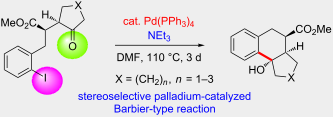1-(2-Methoxy-4-nitrophenyl)-4-(p-tolyl)-1H-1,2,3-triazole (3a), (Table 2, entry 1):
Using method A described above with 2-methoxy-4-nitroaniline
(1a). After purification by flash column
chromatography (25% AcOEt/hexanes, Rf = 0.45), 359 mg
of 3a (79%) were obtained as a yellow solid. Mp > 190 °C;
1H-NMR (400 MHz, CDCl3) δ 8.46 (s, 1H), 8.16 (d, J = 8.8
Hz, 1H), 8.05 (d, J = 8.8 Hz, 1H), 7.97 (s, 1H), 7.79 (d, J = 7.8 Hz, 2H), 7.26 (d, J =
7.8 Hz, 2H), 4.08 (s, 3H) 2.41 (s, 3H) ppm;
13C{1H} NMR (100 MHz, CDCl3) δ 150.6,
148.1, 148.0, 138.6, 131.1, 129.7, 127.3, 125.9, 125.1, 121.1, 116.8, 108.0, 57.0,
21.4 ppm; HRMS (EI) calcd. for C16H13NO3 310.1066 [M+]; found 310.1060.
Org. Process Res. Dev., Article ASAP
DOI: 10.1021/acs.oprd.6b00292
Handling Hazards Using Continuous Flow Chemistry: Synthesis of N1-Aryl-[1,2,3]-triazoles from Anilines via Telescoped Three-Step Diazotization, Azidodediazotization, and [3 + 2] Dipolar Cycloaddition Processes
† Department of Chemistry, York University, 4700 Keele Street, Toronto, Ontario M3J1P3, Canada
‡ GlaxoSmithKline Pharmaceuticals Inc., 709 Swedeland Road, P.O. Box 1539, UMW 2810, King of Prussia, Pennsylvania 19406, United States
§ Centre for Catalysis Research and Innovation (CCRI) and Department of Chemistry, University of Ottawa, Ottawa, Ontario K1N6N5, Canada
Org. Process Res. Dev., Article ASAP
|
|---|
|
Phone: 416-736-5313. Facsimile: 416-736-5936. E-mail: organ@yorku.ca





 .
. Corresponding author email hreissig@chemie.fu-berlin.de
Corresponding author email hreissig@chemie.fu-berlin.de![[1860-5397-12-118-i1]](http://www.beilstein-journals.org/bjoc/content/inline/1860-5397-12-118-i1.png?max-width=550&background=EEEEEE)


